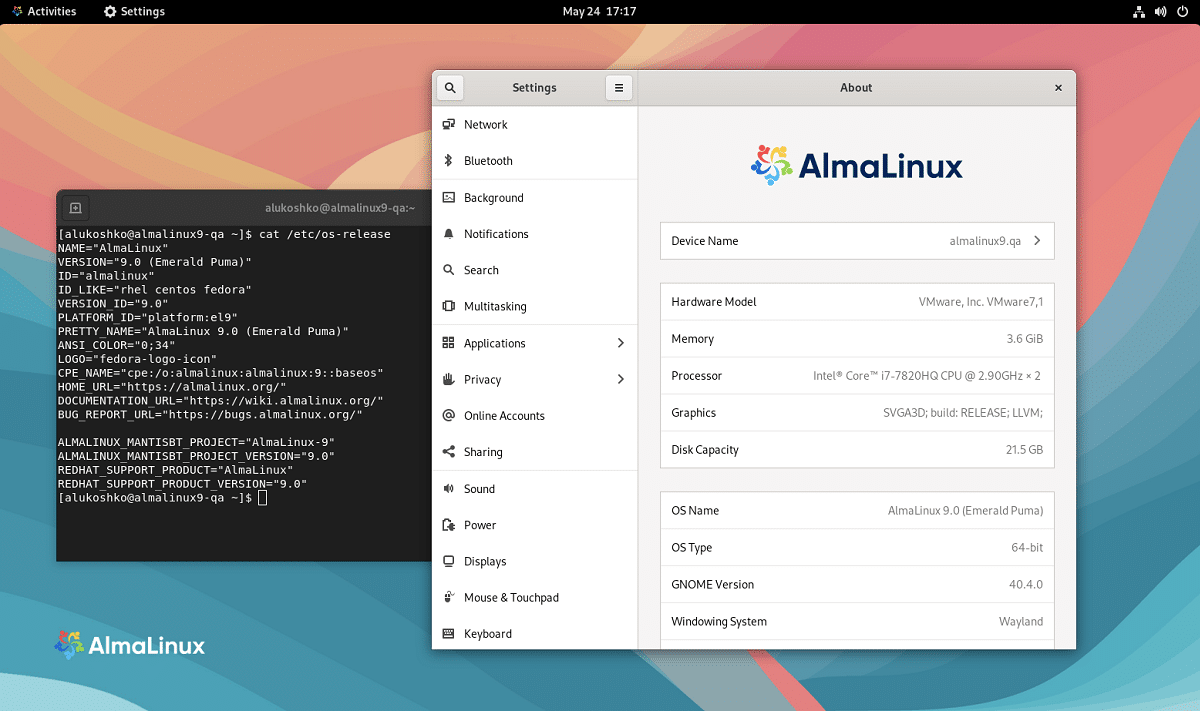
The release of the stable version of the Linux distribution, "AlmaLinux 9.0" version that arrives synchronized with the base of Red Hat Enterprise Linux 9 and that contains all the changes proposed for this branch.
The AlmaLinux project became the first public distribution based on the RHEL package base, releasing stable builds based on RHEL 9. The distribution is fully binary compatible with Red Hat Enterprise Linux and can be used as a replacement for RHEL 9 and CentOS 9 Stream.
For those who are new to AlmaLinux, you should know that this is a distribution that was founded by CloudLinux in response to the premature end of support for CentOS 8 by Red Hat (the release of updates for CentOS 8 was discontinued at the end of 2021, and not in 2029, as users expected).
The project is overseen by an independent non-profit organization, the AlmaLinux OS Foundation, which was created to be developed in a neutral, community-driven environment using a governance model similar to that of the Fedora Project. The distribution kit is free for all categories of users. All AlmaLinux developments are released under free licenses.
Main new features of AlmaLinux 9
Of the most notable changes that stand out from this new version, we can find, for example, that the desktop is based on GNOME 40 and the GTK 4 library and in which the virtual desktops in Activity Summary mode have been changed to landscape orientation and are displayed as a continuous scrolling chain from left to right.
In addition, it is noted that GNOME now provides a power profile driver that provides the ability to switch between power saving mode, power balance mode, and maximum performance mode on the fly.

By default, GRUB boot menu is hidden if it is the only distro installed on the system and if the last boot was successful. To display the menu during boot, simply hold down the Shift key or the Esc or F8 key several times.
The updated security components are also highlighted, since now the distribution uses a new branch of the OpenSSL 3.0 cryptographic library. By default, more modern and secure cryptographic algorithms are enabled.
The OpenSSH package has been updated to version 8.6p1. Cyrus SASL was moved to the GDBM backend instead of Berkeley DB. The NSS (Network Security Services) libraries no longer support the DBM (Berkeley DB) format. GnuTLS has been updated to version 3.7.2.
On the other hand, it is also highlighted that distribution migration to Python 3 completed so the default branch is Python 3.9 and Python 2 has been deprecated.
Significantly improved SELinux performance and reduced memory consumption, as support for setting "SELINUX=disabled" to disable SELinux in /etc/selinux/config has been removed (the specified setting now only disables policy loading, and in fact disabling SELinux functionality now requires passing "selinux=0 » to the kernel).
All audio streams have been moved to the PipeWire media server, which is now the default instead of PulseAudio and JACK. Using PipeWire allows you to bring professional audio processing capabilities into a regular desktop edition, get rid of fragmentation and unify audio infrastructure for different applications.
It is also noted that by default, SSH login as root is disabled, that it is recommended to use nftables to manage the firewall, and that IMA support has been extended to check the integrity of operating system components using digital signatures and hashes.
Finally If you are interested in knowing more about it, you can check the details In the following link.
Download and get AlmaLinux 9
installation pictures they are supported for x86_64, ARM64, ppc64le, and s390x architectures in boot (800 MB), minimum (1.5 GB), and full image (8 GB) forms.
Live builds with GNOME, KDE, and Xfce will be formed later, as well as images for Raspberry Pi boards, containers, and cloud platforms.